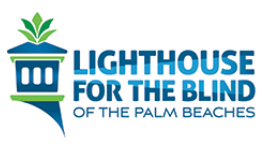Everyday Accessibility: Simple Ways to Make Your Community More Inclusive
Creating a more inclusive community for individuals who are blind or visually impaired is not just about meeting accessibility standards—it’s about fostering understanding, connection, and equal opportunities for everyone. Whether you’re an individual, a business owner, or part of an organization, there are practical steps you can take to ensure your spaces and interactions are welcoming and accessible. Here are some actionable tips to help you make a difference.
1. Make Physical Spaces Easy To Navigate
For individuals with visual impairments, navigating physical spaces can be challenging. Here’s how you can make your environment more accessible:
- Clear Pathways: Keep walkways free of clutter and obstacles. Ensure furniture and displays are arranged in a way that allows for easy navigation.
- Tactile Markers: Use tactile floor markings or raised surfaces to help individuals identify key areas, such as entrances, exits, or stairs.
- Audio Beacons: Install audio beacons in public spaces to provide auditory cues for navigation. Cities like New York have implemented accessible pedestrian signals that can be activated remotely. The Lighthouse has Right-Hear Markers in our offices that allow users to scan QR codes that provide an audio description of the locations in the office.
2. Improve Communication and Interactions
Inclusivity starts with how we interact with one another. Small changes in communication can make a big difference:
- Introduce Yourself: When meeting someone who is blind or visually impaired, introduce yourself by name and let them know you’re speaking to them.
- Offer Assistance Thoughtfully: If someone appears to need help, ask first before offering assistance. For example, say, “Would you like help crossing the street?” rather than assuming.
- Describe Visuals: If you’re presenting or sharing visual materials, describe them in detail. For example, explain what’s on a slide or in a photo.
3. Make Digital Spaces Accessible
In today’s digital world, accessibility extends beyond physical spaces. Websites, apps, and online content should be designed with inclusivity in mind:
- Use Alt Text: Add descriptive alt text to all images so screen readers can convey the content to visually impaired users.
- Keyboard Navigation: Ensure your website can be navigated using only a keyboard, as some users may not rely on a mouse.
- Accessible Design Tools: Consider using tools like the Recite Me assistive toolbar, which provides features like text-to-speech and customizable font sizes.
For more tips on web accessibility, check out resources from organizations like the American Foundation for the Blind (afb.org).
4. Provide Accessible Materials
Whether you’re hosting an event or running a business, ensure your materials are accessible to everyone:
- Braille and Large Print: Offer printed materials in braille or large print formats.
- Digital Files: Provide digital versions of handouts in accessible formats, such as Word documents or PDFs that work with screen readers.
- Audio Descriptions: For videos or presentations, include audio descriptions to explain visual content.
5. Advocate for Inclusive Policies
Advocacy is a powerful way to create lasting change. Encourage your community to adopt inclusive policies:
- Accessible Public Transit: Advocate for accessible public transportation options, such as buses with audio announcements or tactile signage at stops.
- Inclusive Hiring Practices: Promote hiring practices that support individuals with disabilities, ensuring equal opportunities in the workplace.
- Community Education: Host workshops or events to educate others about visual impairments and the importance of accessibility.
6. Support National Organizations
Partnering with or supporting national organizations can amplify your efforts. Groups like the National Federation of the Blind (nfb.org) and World Services for the Blind (wsblind.org) provide valuable resources, training, and advocacy for the blind and visually impaired community.
Building a More Inclusive Future
Creating an accessible and inclusive community doesn’t require monumental changes—it starts with small, intentional actions. By making physical spaces navigable, improving communication, ensuring digital accessibility, and advocating for inclusive policies, we can foster a world where everyone feels valued and empowered.
Let’s work together to build a community that truly includes everyone. 🌟
